2023 Dodge Hornet First Drive – Feeling the Sting

You may have already seen the first ad for the 2023 Dodge Hornet – it’s a spoof of disaster-movie trailers and it includes a man standing in a city, arms wide open, shouting “let me feel your sting!”
I felt the Hornet’s sting during a day of driving through North Carolina. And I didn’t even need an EpiPen.

(Full disclosure: Dodge flew me to Asheville, North Carolina, and fed and housed me so that I could drive the Hornet. I did not take home the proffered hat but I did snag a notebook.)
The Hornet is an interesting vehicle – it’s a small crossover but it’s not like most cute-utes. It’s not just a grocery-getter – it’s meant to perform.
Dodge needs something to replace the outgoing muscle-car lineup, and it also needs a small crossover to keep up with the Joneses. Enter the Hornet, which shares its bones with the upcoming Alfa Romeo Tonale.
Company spokes folks made sure to emphasize the performance aspects of the Hornet, which comes in internal-combustion engine and plug-in hybrid flavors, dubbed GT and R/T. This is why we were given the opportunity to play in the Pisgah National Forest, dive-bombing tree-lined highways up and down the mountain. But crossover buyers aren’t just in it for the entertainment – how does the Hornet stack up both when pushed and when cruising the city?

That first part was emphasized heavily by Dodge’s crew. This isn’t just a crossover, went the implied message. It’s a performance hatchback that’s raised a bit. When I asked what competitive vehicle(s) Dodge was benchmarking, the only answer was the Mazda CX-5 – others were deemed to be not performance-centered enough.
The GT’s engine is a 2.0-liter turbocharged four-cylinder making 268 horsepower and 295 lb-ft of torque, while the R/T gets a plug-in hybrid setup that combines a 1.3-liter four-cylinder with an electric motor. Total system horsepower is listed at 288 and torque is 383 lb-ft – it breaks down to 199 lb-ft from the internal-combustion engine and 184 from the 90-kW electric motor mounted at the rear axle. The battery is a 15.5-kWh lithium-ion unit.
R/Ts promise up to about 30 miles of electric-only range, and in addition to the rear-mounted electric motor, there’s a belt starter/generator at the front. Dodge says that the R/T can get from drained to a full charge in about 2.5 hours on a Level II and around 10 hours on a wall charger.
All Hornets are all-wheel drive, with the GT getting a nine-speed automatic transmission and the R/T getting a six-speed auto.

I was assigned a R/T in Plus trim for my morning drive and immediately found it to be quite stiff riding. Both the GT and R/T have fully independent front and rear suspensions with MacPherson struts up front and Chapman struts in the rear and both are available with dual-stage-valve adaptive damping. The R/T I spent my morning in had adaptive damping.
I wouldn’t say the ride was punishing, but there was no doubt about the R/T’s mission. Another sign of the R/T’s performance objective is the PowerShot system which adds a boost of 30 horsepower for up to 15 seconds.
Here’s how it works – pull both of the steering-wheel-mounted paddles towards you and hold for a second or two, and then the system kicks on and checks to make sure the battery charge and temperature are in the right place. If so, you slam the accelerator all the way to the floor and the extra power kicks in. Dodge claims it can take the car’s 0-60 time down from 7.1 seconds to 5.6.
I can’t verify that, but I can tell you the extra power was noticeable, especially when passing, though not quite as evident as I expected it to be. Still, it’s fun to play with. There is a 15-second cooldown each time you use it.

Overall, I felt like the R/T could’ve used more power – an admittedly odd thing to say about a vehicle with 383 pound-feet of twist available. Maybe it was the 4,140-pound curb weight. Maybe it had something to do with the PHEV’s machinations. I wouldn’t say the R/T was slow, exactly, but a tad more grunt, or maybe just a bit more responsiveness, wouldn’t hurt.
Hustling the mountain roads, I found the Hornet’s dance moves to be a highlight. I wasn’t anywhere even in the same ZIP code as “the limit’’ – I was on public roads, after all – but I was being aggressive and I found that understeer was evident, though easily corrected for with steering and throttle adjustments. Setting the R/T into Sport mode livened up the already tight and quick steering nicely – and it also had the engine hold onto revs even after I lifted. Body roll was present – not unexpected from a crossover – but generally well muted.
R/Ts come standard with Brembo brakes, and they felt a tad spongy around town on a cold morning but were nice and stout in the mountains – maybe they just needed to warm up to come alive.
The R/T was noisy – wind noise was well muted, but tire/road noise and engine noise seeped in at too high of a level. At least the hybrid transitions were fairly seamless – much less clunky than I’ve experienced in other Stellantis products, such as certain Jeep 4xes. One comfort and convenience nit – the driver’s seat backrest felt a tad stiff during long stints at the wheel.
In addition to the Sport mode, there’s an eSave mode than can help you get a bit more EV range – I picked up a few miles here and there. The hybrid mode also seemed to add some miles of EV range, especially when the Hornet was pushed – credit regen, I think.

Inside, the materials initially seemed a bit downmarket for the price. The dash especially felt hard. But these were pre-production cars, and I got a unit that came off the line with a bad piece of trim – the other cars on hand had materials that felt nicer. Since both GTs and R/Ts get the same materials, regardless of trim, I just got a bad draw, it appears. I also had a driver-aid system warning light pop on and then go away five minutes later. These things happen sometimes with pre-pro units, and I suspect the factory vehicles will be better sorted and have the proper trim pieces.
I’ll note here that since the Hornet is sharing its platform with the Tonale, the interior looks like the Alfa’s, though key pieces of switchgear, such as the ignition button, are moved.
I like the customizable gauge cluster, and as usual, Uconnect infotainment works well, though once again we’re faced with an infotainment screen that seems tacked on. At least the center console setup worked well in terms of utility, making it easy to store my phone and sunglasses while driving. My only real beef with the controls is the roller knob embedded in the console for radio volume – it’s a bit annoying to use. Of course, there are steering-wheel controls for the radio.
One nice touch? When you shut the PHEV down, you get a charge-time estimate in the cluster, both for Level II and wall.
I found the rear-seat room to be a bit tight if you’re a tall person sitting behind another tall person, but most adults should be fine for short and medium trips.

The GT I drove felt lighter on its feet and more responsive, though the stiff ride and noise complaints remained. The ride was slightly less stiff, but still on the harsher side of compliant. I didn’t get a chance to drive a GT on the same twisty mountain roads as I did the R/T, but the handling did seem lively. The Sport mode’s differences seemed a tad less obvious than in the R/T. I drove two GTs, one with adaptive damping and one without, but the difference was negligible around town – I’d have to spend some more time testing both on the backroads to see how the handling differs depending on which suspension setup you have.
Though the GT offers less power, it still seemed to have enough grunt for around-town driving.
Standard or available features, depending on trim and model, include wireless cell phone charging, wireless Apple CarPlay and Android Auto, Alexa speaker integration, Harman-Kardon audio, keyless entry, rear-seat reminder, rain-sensing wipers, heated steering wheel, heated front seats, hands-free liftgate, 18-inch wheels, and 20-inch wheels.
Available packages include Blacktop (Gloss Black painted mirror caps and side-window moldings, 18-inch tires with all-season tires, black badging), Tech (intelligent speed assist, active driving assist system, 360-degree camera, drowsy-driver detection, parking-assist system), and Track (black Alcantara seats with red accents, aluminum door sills, 20-inch wheels with all-season tires, dual-mode suspension, sport leather steering wheel, bright pedals, and red-painted brake calipers).
Available advanced driver-aid systems not already mentioned include automatic emergency braking, a lane-support system (which I found usually fine but occasionally intrusive), blind-spot detection with rear cross-path detection, driver-attention assist, intelligent adaptive cruise control, and a system that combines lateral control, lane support, and traffic-jam recognition to center the Hornet in the lane. Intelligent speed assist includes traffic-sign recognition.

Pricing starts at $29,995 for a base GT and $39,995 for a base R/T. Loaded R/Ts start at $44,995 and destination is $1,595. The R/T Plus I drove started out at the loaded MSRP and with the Blacktop Package ($1,595), Tech Package ($2,245), Track Package ($2,595), Blue Steele paint ($495), and credits for sunroof delete and package bundling cost $52,405.
The two GT Pluses I drove both started at $34,995 and the one that had the Tech and Track Packs (Track was $2,995 here) cost $41,710 as tested, adding in $495 for Hot Tamale paint and getting back $615 for sunroof delete. The other one I wheeled had Blacktop ($1,995 here) and Tech, but not Track. The Blue Bayou paint was also $495, and this one, too, deleted the sunroof for $615 back. It tested for $40,710.
Hornets will be built in Naples, Italy, alongside its platform-mate, the Alfa Romeo Tonale. GTs hit the market soon, with R/Ts coming later this spring. R/Ts will be model-year 2024.
Dodge wants you to find the Hornet to be the best-performing crossover on the market, but there’s a caveat at play – only the CX-5 is in the same ballpark. Everything else is either a grocery-getter or an off-roader.
The bigger problem is that the Hornet isn’t as sorted from a noise/vibration/harshness perspective as some of the more popular small/mid-size five-seat crossovers, and it gets pricey fast.

If you’re looking for a well-rounded commuter, a Toyota RAV4 or Honda CR-V might be the ticket. But neither will be quite as engaging to drive on a North Carolina mountain road, and Dodge is banking on that.
While the Hornet may have NVH flaws, Dodge did get a major component right – the fun-to-drive factor isn’t lacking. But there are tradeoffs to consider, and buyers will have to be performance-oriented themselves to make them.
If you don’t need a PHEV’s 30 miles of electric-only range or the extra torque provided by the R/T's powertrain, the GT offers the same available features, similar handling, and all-wheel drive for a more reasonable price, and it feels more responsive and lighter on its feet. It also still provides nearly 300 lb-ft of twist. I’d strongly consider the GT Plus with Track and Tech packages were it my money on the line – at about 40 grand, a GT Plus so equipped becomes a performance alternative to a loaded RAV4.
A performance crossover may seem like an odd proposition – aren’t crossover buyers looking for a commuter car or, in some cases, an off-roader? Sure. But those who want more sport have had somewhat limited options. Dodge is happy to add one more choice to the list.
It’s not without flaws and tradeoffs. It needs a bit more refinement. But the Dodge Hornet is, at least, ready to play on the backroads.
We’ll see if that’s enough to sting the competition.
[Images © 2023 Tim Healey/TTAC, Dodge]
Become a TTAC insider. Get the latest news, features, TTAC takes, and everything else that gets to the truth about cars first by subscribing to our newsletter.
Latest Car Reviews
Read moreLatest Product Reviews
Read moreRecent Comments
- Jagboi The Canadian Mark VI's had the "Electronic fuel injection" badge on the side, but had the Ford Variable Venturi carb. The Canadian brochure for these cars does not have the portion about EFI that the US brochures have. A bit of false advertising for sure.I've seen a number of these cars up to 1983 and none of the Canadian market cars had EFI. The US cars had a crank triggered ignition systenm, the Canadian cars had the Duraspark just like the carbed Ford and Mercury Panthers.
- Syke Back when BMW actually made ultimate driving machines.
- Alan Many Ford designs that are manufactured in China are designed in Australia. Ford just fired hundreds of engineers. That only leaves engineers to keep on designing the Rangers, Bronco, etc.
- Alan Big Al,Seems the author has confused horsepower and kilowatts. Check out what the Aussie Ranger Raptor power output is.The VW Amarok is the 2.3 Eco Boost, I think its about what the author wrote.To be fair, the author may be quoting EU hp.
- Paul Alexander Is TTAC okay? Where are the other articles? Where are the other comments?















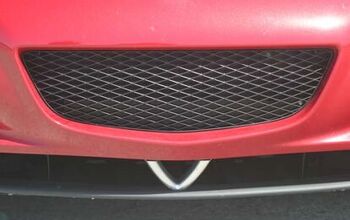

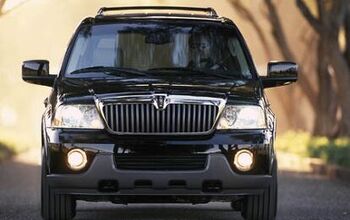

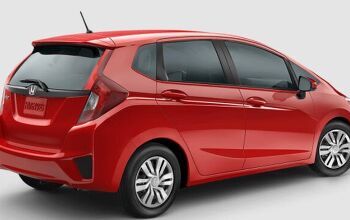

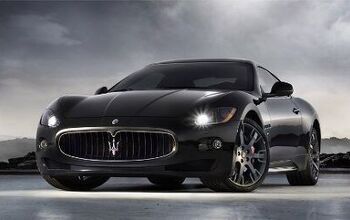









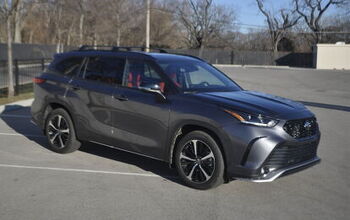
Comments
Join the conversation
Grafting the Dodge nose on so crudely, unbalances the look of the thing.
The rea thing is quite pretty...
It's just great except for one thing; it's a Dodge. Good Luck with that.